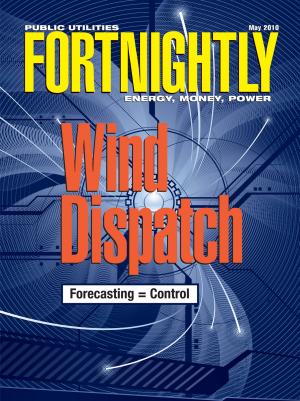Wind faces a nano-scale threat.
Michael T. Burr is Fortnightly’s editor-in-chief. Email him at burr@pur.com.
For decades now, wind turbines have been generating electricity more cheaply than most other (non-hydro) renewable energy technologies. In particular, wind has maintained a comfortable lead over solar energy in the price-per-kWh race.

For instance, a leaked “confidential” report1 prepared for the City of Los Angeles last year estimated that rooftop PV systems being contemplated by the Department of Water & Power would cost about $7,000 per kilowatt to install, with a 20 percent capacity factor. The report said these capital-cost figures were triple those for equivalent wind capacity (which on average generates with about a 30 percent capacity factor), and 1.5 times the price of solar thermal power.
Given wind’s clear economic advantage, the industry has focused most of its renewable-related attention on wind power. Transmission development efforts and policy processes have concentrated on bringing remote wind resources into load centers, and system operators have worked to accommodate wind’s variable and non-dispatchable nature (see “Beyond Intermittency”). In short, with few exceptions, wind stands at the top of the renewable pecking order.
That’s destined to change.

